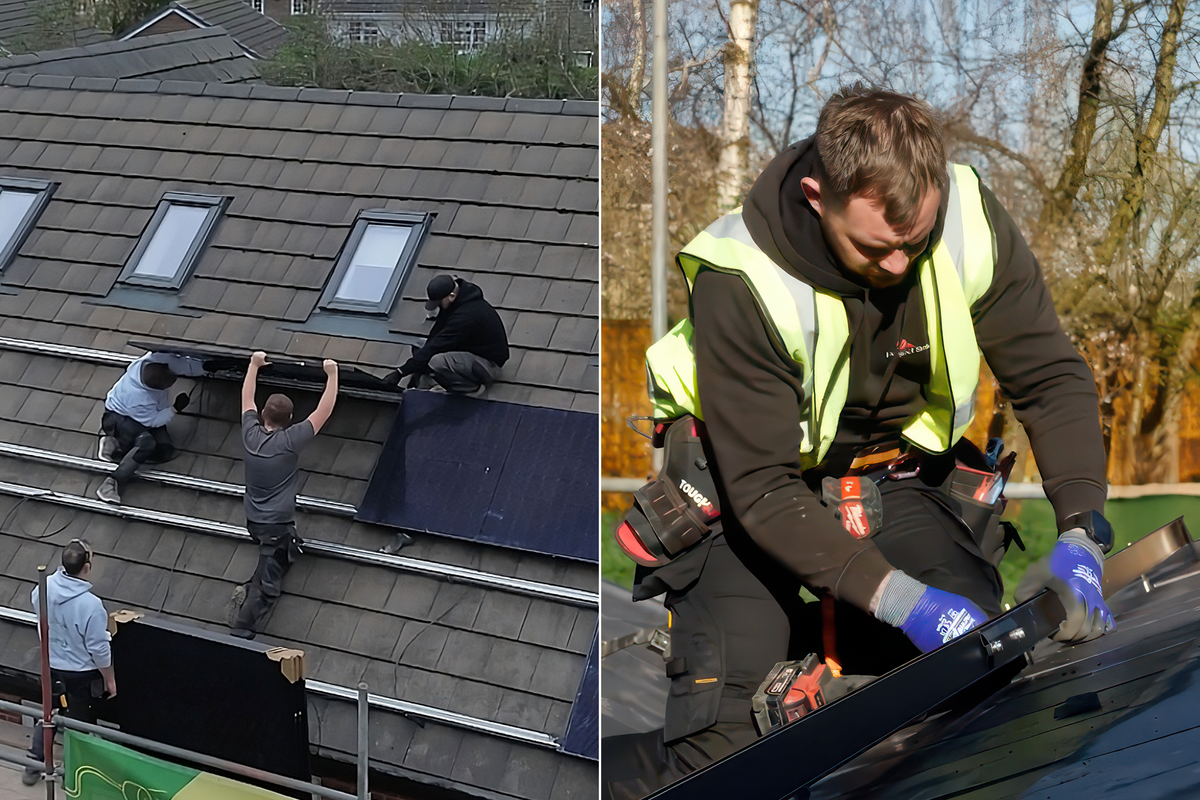Business
Homeowners Embrace Solar Power as UK Output Surges in 2025

As energy prices continue to rise, homeowners in the UK are increasingly turning to solar panels, with many asking whether the investment is worthwhile. By mid-August 2025, solar electricity generation in Britain had already exceeded the total output for 2024, reaching a remarkable 14.43 billion kWh. This increase is sufficient to power over five million homes and reflects a significant 20 percent growth in national solar capacity, aided by the sunniest spring since record-keeping began.
The surge in installations has resulted in a 22 percent increase in domestic solar panel setups during the first half of 2025, adding approximately 2 GWp (gigawatt-peak) of new solar capacity—the fastest growth rate in a decade. This rapid expansion has drawn numerous new manufacturers and installers into the UK market, creating challenges for consumers trying to determine which panels offer the best performance and value.
To assist in this decision-making process, extensive research and testing have been conducted to identify the top solar panels for 2025. Factors such as power output, efficiency, degradation rates, aesthetics, and return on investment were evaluated. The analysis also included warranties, long-term data, and insights from installers like Glow Green and Solar4Good, along with feedback from homeowners who shared their purchasing experiences.
Leading Solar Panel Options for 2025
The guide highlights several standout options for homeowners. Among these, the DMEGC Infinity solar panel emerges as the top choice for most UK households. Although its efficiency rating of 23 percent and degradation score of 87.4 percent after 30 years may not be the highest, its combination of affordability, durable performance, and manufacturer reliability makes it a compelling all-rounder. The Infinity model also features an anti-glare coating, enhancing its aesthetic appeal, particularly for homes near roads.
For those prioritizing long-term reliability, the SunPower Maxeon 7 is exceptional, boasting a remarkable 40-year warranty and the ability to retain over 90 percent of its original output after 30 years. Although it is priced higher than many competitors, its longevity justifies the investment, especially for homeowners seeking enduring performance.
The REA Fusion R stands out as the best budget solar panel. It offers one of the most affordable installed costs per kilowatt, while still maintaining excellent long-term performance. Notably, its bifacial design allows for energy absorption from both sides, enhancing overall efficiency.
Another notable contender is the Perlight Black Grid, recognized for its high efficiency. With a focus on maximizing power output, it is particularly suitable for homes with limited roof space. The panel is backed by a 30-year warranty, providing additional reassurance to buyers.
For small rooftops, the Aiko Neostar is recommended for its compact design and high power density, producing 460W at an impressive 23 percent efficiency. Its lightweight construction simplifies installation, making it ideal for smaller properties.
The Jinko Tiger panels cater specifically to the UK’s cloudy weather. Their advanced N-type cell technology ensures high energy output even in low-light conditions, making them a reliable choice for the country’s often overcast skies.
Key Considerations for Homeowners
When considering solar panel options, it is essential to evaluate more than just price and performance. Factors such as warranty, manufacturer reputation, and cell technology play crucial roles in ensuring a satisfactory investment. Homeowners are encouraged to conduct thorough comparisons of multiple installers, ensuring they are MCS-certified and familiar with warranty terms.
Most modern solar panels are designed to last between 25 and 30 years, typically coming with performance guarantees that ensure they will still generate approximately 80 percent of their original output at the end of that period. While the panels themselves are generally reliable, inverters may require replacement every 10 to 15 years.
Furthermore, the UK government currently offers a zero VAT rate on domestic solar installations until at least 2027, effectively reducing upfront costs by 20 percent. Homeowners can also benefit financially through the Smart Export Guarantee (SEG), which compensates for surplus electricity sent to the grid.
The potential savings from solar panels depend significantly on individual energy consumption, roof suitability, and system size. Most UK households can expect to lower electricity bills by 50 to 70 percent through self-consumption alone, with some recovering installation costs within 8 to 12 years.
In summary, the decision to invest in solar panels requires careful consideration of various factors, including brand reputation, long-term performance, and potential savings. With several high-quality options available in 2025, homeowners are well-positioned to make informed choices that align with their energy needs and financial goals.
-

 Health3 months ago
Health3 months agoNeurologist Warns Excessive Use of Supplements Can Harm Brain
-

 Health3 months ago
Health3 months agoFiona Phillips’ Husband Shares Heartfelt Update on Her Alzheimer’s Journey
-

 Science2 months ago
Science2 months agoBrian Cox Addresses Claims of Alien Probe in 3I/ATLAS Discovery
-

 Science2 months ago
Science2 months agoNASA Investigates Unusual Comet 3I/ATLAS; New Findings Emerge
-

 Science1 month ago
Science1 month agoScientists Examine 3I/ATLAS: Alien Artifact or Cosmic Oddity?
-

 Entertainment5 months ago
Entertainment5 months agoKerry Katona Discusses Future Baby Plans and Brian McFadden’s Wedding
-

 Science1 month ago
Science1 month agoNASA Investigates Speedy Object 3I/ATLAS, Sparking Speculation
-

 Entertainment4 months ago
Entertainment4 months agoEmmerdale Faces Tension as Dylan and April’s Lives Hang in the Balance
-

 World3 months ago
World3 months agoCole Palmer’s Cryptic Message to Kobbie Mainoo Following Loan Talks
-

 Science1 month ago
Science1 month agoNASA Scientists Explore Origins of 3I/ATLAS, a Fast-Moving Visitor
-

 Entertainment2 months ago
Entertainment2 months agoLewis Cope Addresses Accusations of Dance Training Advantage
-

 Entertainment3 months ago
Entertainment3 months agoMajor Cast Changes at Coronation Street: Exits and Returns in 2025









